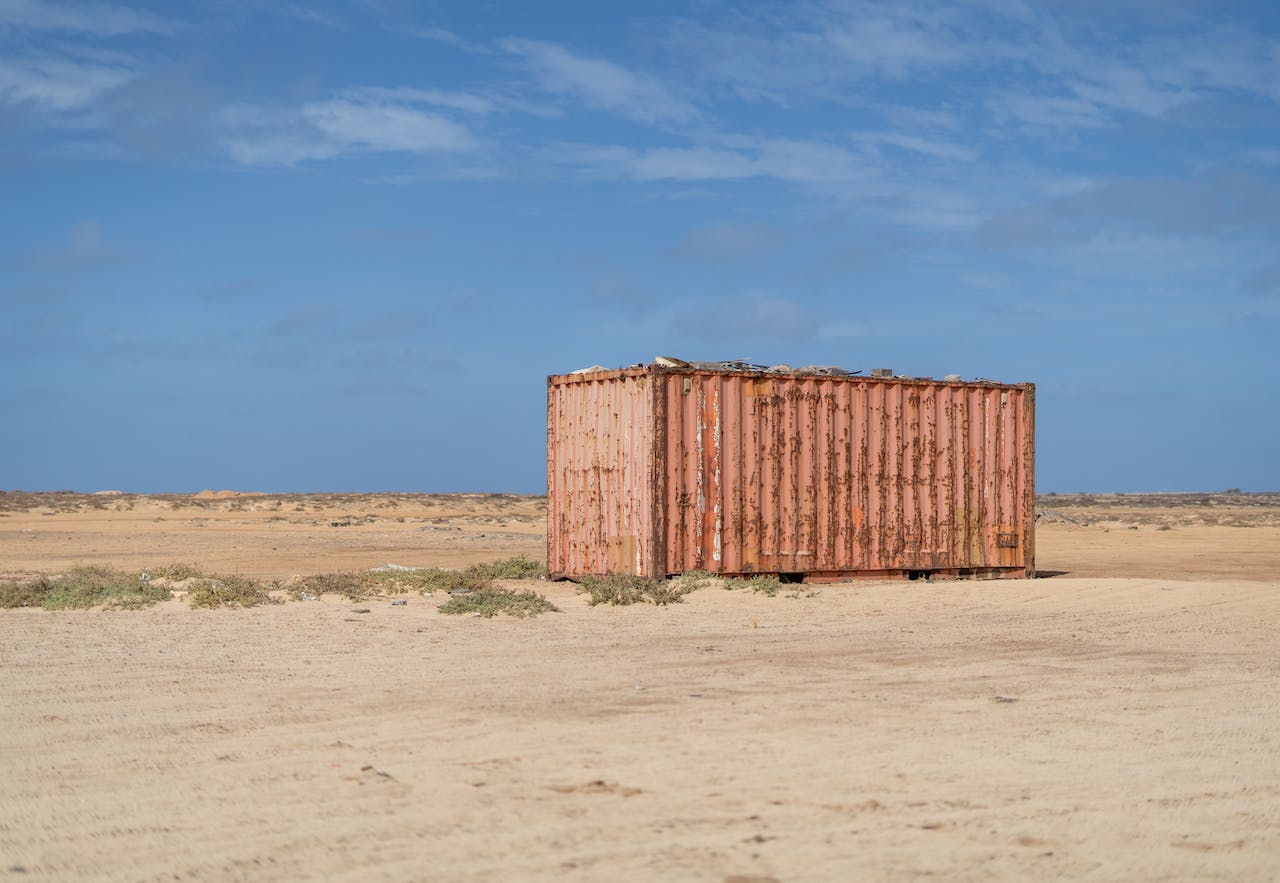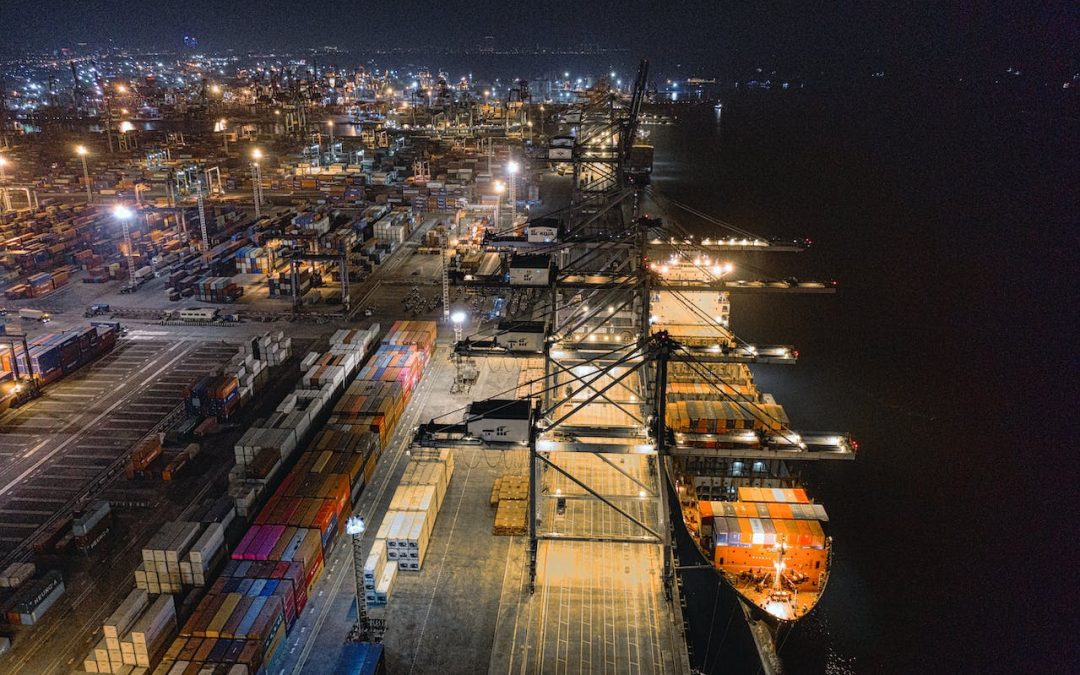Container fires are as devastating as they sound. Not only is there a significant risk to life if a container catches fire, but the cost to businesses is huge, too.
If you’re reading this and thinking, ‘I didn’t even know that container fires were a thing!’, don’t worry. We’re going to tell you what the risks are and how you – and we – can protect your cargo.
Container Fires: What Are The Risks?
Generally, a shipping container does a pretty good job of containing a fire if one breaks out within it. This is because the limited oxygen within the tightly sealed container soon burns out, meaning wood-fuelled fires are short-lived and remain contained. Unfortunately, container fires are usually born of different fuels, and that causes much bigger problems.
The risk of a container fire occurring is thought to be on the rise, with 64 ships lost to cargo fire in the past 5 years alone. Cargo fires on container vessels can cause major damage to the ship itself, damage and loss of goods and put the crew’s lives at risk.
The reasons a container fire might start are diverse, including improper packing and the transportation of hazardous goods. Here are some other considerations:
- External factors, such as the high heat of summer. This can heat the goods within the containers beyond an appropriate level.
- Ships are getting bigger and carrying more containers. The more containers, the higher the risk of cargo fire.
- Containers are being packed full of more goods as freight rates remain high and shippers aim to get more bang for their buck.
Misdeclared Goods
Goods that are mis-declared or given the wrong classification cannot be handled, stored and packed suitably.
Once the cargo is inside a container, it’s difficult for crew members to know whether the goods are hazardous. Businesses that mis-declare their goods to access lower freight rates end up with potentially hazardous goods stowed in harder-to-reach areas on board the vessel, making dealing with any fires that occur extremely difficult.
In the event of a cargo fire, it’s up to the crew to deal with it. And firefighting onboard a ship with a small crew of 20-30 individuals, is no easy task. This means that even if the fire is detected in time, keeping it under control and putting it out is a whole other story.

Regulations to Prevent Accidents
The risk of container fire is widely acknowledged, and a bevvy of regulations are in place to reduce the risk.
The Role Of The IMO
The IMO, or the International Maritime Organisation, is the UN specialised agency responsible for the safety and security of shipping.
Shipping is an international industry, and it’s the IMO’s job to prevent ship operators from cutting corners to save cash. This is hugely important in preventing container fires as bad shipping practices can compromise the safety and security of the goods being shipped, not to mention the ships, crewmembers, ports and harbours.
The IMDG Code
The IMO developed the International Maritime Dangerous Goods (IMDG) code to help businesses worldwide transport dangerous goods safely over the oceans.
Businesses intending to ship dangerous goods by sea must comply with the IMDG code, and compliance has been mandatory since January 2020. Businesses failing to follow the rules set out in the code could experience:
- Shipments being rejected at the port
- Delays which require shipments to be stored, incurring fees
- Civil penalties
- Incidents in transit – like container fires.
The code is made up of two books, volume 1 and volume 2, as well as the IMDG code supplement. The resources cover everything from packing provisions to a dangerous goods list to a medical first aid guide, and the whole thing is updated every 2 years.
The IMDG code emphasises the importance of separating incompatible substances to prevent container fires. Complying with safety standards like the code is crucial for shipping businesses who want to reduce the risk of such a costly and often devastating event.
Mitigating The Risks
While a lot of the work to reduce fire risks is done by individuals who physically move the cargo, everyone in the shipping process plays a role.
Here are our top three considerations for mitigating the risks of container fires…
Correct Labelling
Different goods have different labelling and documentation requirements. It all depends on what they are, where they are travelling to, and the rules and regulations of their destination.
Perishable, fragile and dangerous goods will need to be labelled as such. Proper labelling and having the right documents to hand means that incompatible substances can be kept well away from each other, in turn reducing the risk of container fire and keeping goods, container vessels and crewmembers safe. It also means your shipment won’t get stalled due to incorrect details.
Training
For anyone handling cargo, in-depth training should be provided and kept up to date. This ensures all staff members know how to safely and correctly handle, move and store a range of goods they come into contact with.
Appropriate Packaging
When you’re working out how best to package your goods, head for fireproof dunnage and fire retardant pallets to reduce the risk of container fire and potential damage or loss of your goods. Remember not to over-fill your pallets, crates or cases, too!
For more on how to package and prepare your cargo for shipping, read this.
Could Your Business Handle A Container Fire?
Though they are rare, container fires can be devastating, resulting in loss of goods and even lives.
Businesses wanting to protect their goods can reduce fire risks along the shipping process and stay on the safe side.
Looking for friendly advice about all things freight and shipping? Give us a call.

